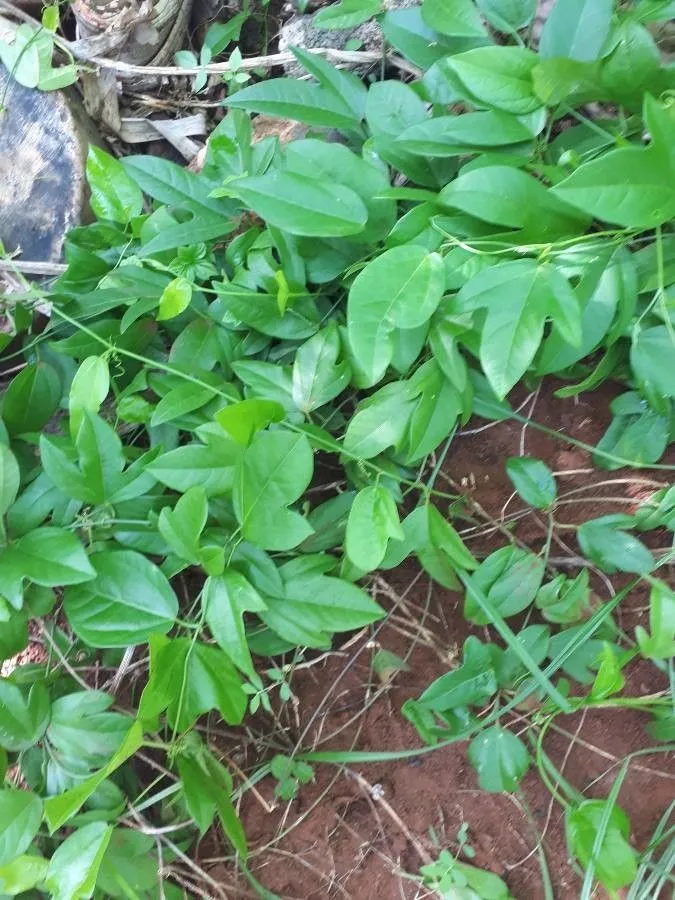
Author: L.
Bibliography: Sp. Pl.: 958 (1753)
Year: 1753
Status: accepted
Rank: species
Genus: Passiflora
Vegetable: False
Observations: Trop. & Subtrop. America
The Cork passionflower, scientifically designated as Passiflora suberosa, is an intriguing member of the Passifloraceae family. Originally described by the eminent botanist Carl Linnaeus in 1753, this plant has since captivated botanists and plant enthusiasts alike with its distinctive characteristics and wide-ranging habitat.
Passiflora suberosa is predominantly found across tropical and subtropical regions of the Americas. This expansive native range showcases its adaptability to various climates and environments. The Cork passionflower thrives in diverse ecological settings, from dense forests to open fields, contributing to its widespread distribution.
One notable feature of Passiflora suberosa is its unique cork-like bark, which distinguishes it from other species within the Passiflora genus. This distinctive trait not only gives the plant its common name but also plays a crucial role in its identification. Additionally, the plant exhibits charming small flowers, typically pale greenish-yellow or purplish in color, which, while not as flamboyant as those of other passionflowers, possess a subtle beauty and elegance.
The Cork passionflower also produces small, dark purple to black berries, which serve as a vital food source for various bird and insect species, thus playing an important role in local ecosystems. Its intricate tendrils allow the plant to climb and spread, often forming dense, verdant clusters that add to the biodiversity of their habitats.
Beyond its ecological significance, Passiflora suberosa holds potential benefits in horticulture and traditional medicine. Its hardiness and the relatively low maintenance required for cultivation make it an appealing addition to gardens and green spaces aiming to support native flora.
In summary, the Cork passionflower is a fascinating plant species with a rich history and ecological presence. Whether appreciated for its unique appearance, its role in the environment, or its horticultural potential, Passiflora suberosa stands out as a remarkable example of botanical diversity within the tropics and subtropics of the Americas.
Eng: wild passionfruit, cork passionflower, cork passionvine, corky passionflower, corkystem passionflower, devil’s pumpkin, devil’s-pumpkin, huehue haole, indigo berry, indigo-berry, maypop, small passionflower, small passionfruit, ink berry, small passion flower
Por: maracujazinho, maracujá-cortiça, maracujá-do-mato, maracujá-mirim, maracujá-miudinho, uva-do-mato
En: Cork passionflower, Cork passionvine, Indigo-berry, Devil’s-pumpkin, Small passionflower, Small passionfruit, Corkystem passionflower, Corky-Stem Passion-Flower, Wild passionfruit, Corky passionflower, Devil’s pumpkin, Huehue haole, Indigo berry, Maypop, Ink berry, Small passion flower, Corky-stem Passionflower, Monterey pine, Wild passion fruit
Zh: 三角葉西番蓮
Fi: Korkkipassio
Fr: Passiflore, Grain d’encre, Grenadille, Grenadille à fleurs pâles
Pt: Maracujazinho, Maracujá-cortiça, Maracujá-do-mato, Maracujá-mirim, Maracujá-miudinho, Uva-do-mato
Es: Parcha yedra
Zh-tw: 三角葉西番蓮
Vi: Lạc tiên bần
Taken Jul 5, 2022 by Trap Hers (cc-by-sa)
Taken Nov 21, 2021 by Lacinda Naturopatica (cc-by-sa)
Taken Nov 16, 2014 by Tela Botanica − Liliane Roubaudi (cc-by-sa)
Taken Nov 16, 2014 by Tela Botanica − Liliane Roubaudi (cc-by-sa)
© copyright of the Board of Trustees of the Royal Botanic Gardens, Kew.
© copyright of the Board of Trustees of the Royal Botanic Gardens, Kew.
© copyright of the Board of Trustees of the Royal Botanic Gardens, Kew.
Taken Aug 30, 2021 by maria miller (cc-by-sa)
Taken Mar 5, 2021 by christiane Fazer (cc-by-sa)
Taken Dec 15, 2020 by saydo saydo (cc-by-sa)
Taken May 27, 2017 by Hugo SANTACREU (cc-by-sa)
Taken May 27, 2017 by Hugo SANTACREU (cc-by-sa)
Taken Apr 15, 2022 by Muzzachiodi Norberto (cc-by-sa)
Taken Jul 7, 2022 by Trap Hers (cc-by-sa)
Taken Nov 16, 2014 by Tela Botanica − Liliane Roubaudi (cc-by-sa)
Taken Jan 4, 2020 by Boinali SAID (cc-by-sa)
Taken Dec 7, 2021 by Dora Aponte (cc-by-sa)
Taken May 27, 2017 by Hugo SANTACREU (cc-by-sa)
Taken May 21, 2018 by Hugo SANTACREU (cc-by-sa)
Taken Jul 14, 2021 by Martin W (cc-by-sa)
Taken May 27, 2017 by Hugo SANTACREU (cc-by-sa)
Taken May 27, 2017 by Hugo SANTACREU (cc-by-sa)
Taken Oct 9, 2018 by Hugo SANTACREU (cc-by-sa)
Taken May 27, 2017 by Hugo SANTACREU (cc-by-sa)
Taken Oct 9, 2018 by Hugo SANTACREU (cc-by-sa)
Taken May 27, 2017 by Hugo SANTACREU (cc-by-sa)
Taken Jul 26, 2021 by Maarten Vanhove (cc-by-sa)
Family: Myrtaceae Author: (F.Muell.) K.D.Hill & L.A.S.Johnson Bibliography: Telopea 6: 402 (1995) Year: 1995 Status:…
Family: Rubiaceae Author: Pierre ex A.Froehner Bibliography: Notizbl. Bot. Gart. Berlin-Dahlem 1: 237 (1897) Year:…
Family: Sapindaceae Author: Koidz. Bibliography: J. Coll. Sci. Imp. Univ. Tokyo 32(1): 38 (1911) Year:…
Family: Asteraceae Author: A.Gray Bibliography: Pacif. Railr. Rep.: 107 (1857) Year: 1857 Status: accepted Rank:…
Family: Fabaceae Author: Medik. Bibliography: Vorles. Churpfälz. Phys.-Ökon. Ges. 2: 398 (1787) Year: 1787 Status:…
Family: Aspleniaceae Author: (Cav.) Alston Bibliography: Bull. Misc. Inform. Kew 1932: 309 (1932) Year: 1932…